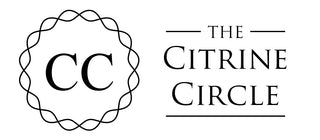One of the most common questions we get asked is ‘what crystals can you find in the UK?’ Upon first thought, it’s easy to look at somewhere like Madagascar, Pakistan or Brazil and wonder why we don’t have as many ‘exciting’ crystals in the UK. But, we have a whole wealth of crystal and minerals if you know where to look, and although they aren’t necessarily as large, rare or expensive as those you might find abroad, we do have some that are totally unique to us!
FLUORITE
Probably the most famous of our UK offerings are the various varieties of Fluorite that cannot be found anywhere else in the world. The most notable of these are the Derbyshire Blue John and the world famous daylight colour change Weardale Fluorite.
Blue John is a special variety of Fluorite found only in Treak Cliff Cavern and a few surrounding mines in Castleton, Derbyshire. It is characterised by it’s blue/purple, yellow and white colouration, often banded or striped. This colouring is thought to have been where the name came from - the most popular theory behind it is how the French term ‘bleu et jaune’ translates to ‘blue and yellow’ which was then adopted by the English. Blue John has been mined since the 18th Century and was very popular with the Victorians, and they created carvings, jewellery and home decor with it. It is still being mined today, though to a smaller extent (around half a tonne of Blue John is dug each year from Treak Cliff Cavern), and it is one of only a few places in the UK you can actually take a tour of a mine.

Weardale Fluorite is another hugely popular variety of Fluorite found only in the northeast of England, but desired all across the world by collectors for it’s unusual daylight fluorescence and sharp well defined cubic structure. The various mining sites can be found in the 19 mile long valley that stretches across the North Pennines in County Durham. Diana Maria Fluorite has been the most popular discovery in recent times along with Rogerley Fluorite, with it’s characteristic bright gemmy green cubes that glow a luminous blue in daylight, reacting to the UV content in sunlight. There have been other finds at these mines, including bright purples and yellows, but green seems to remain the most desirable. Outside these mines there have been other significant finds - for example the Blue Circle Cement Quarry Fluorite displays a similar phenomenon, albeit in darker shades of green or sometimes soft lavender purple. Frazers Hush Mine is another one that deserves a mention, for it’s well formed, often large cubes that glow a bright blue under UV light. This mine was closed in 1999, so is no longer producing new specimens.

The fluorescence of Fluorite (and other UV reactive minerals) is due to the presence of rare earth elements that are known as ‘activators’. In Fluorite these tend to be Ytrrium, Europium, Samarium or organic matter. Not all Fluorite will fluoresce under daylight or UV light, but it is probably the most well known for this characteristic - so much so that the term ‘fluorescence’ comes from Fluorite.
Although Weardale and Castleton are probably the most famous of the UK Fluorite localities, there are other places Fluorite can be found. The Hilton Mine in Cumbria is another well known Fluorite location, this time for it’s bright yellow gemmy cubes.

GARNET
Often mistaken for rubies, and indeed even known locally as ‘Ruby Bay’, Elie Bay on the eastern coast of Scotland is a place where a patient person can find tiny Garnet crystals, particularly after a storm. You’ll need patience though - these tiny gems are hard to spot, and the locals know the best time to go hunt them down!
DULCOTE AGATE
A slightly more obscure crystal is Dulcote Agate, or Mendip Potato Stone as it is also known as locally, probably due to the rounded shape of the nodules that the Agate is found as. Mined from Dulcote Quarry, these Agates with Calcite have attractive bands of red and white, with the red coloring coming from Hematite. These are most often seen sold as polished slices, although geodes with crystallised centres do exist. The main quarry in which they were found is now closed, although some can still be found on private properties, but they are rarely recovered or offered up for sale.

PYRITE
Although a lot of the Pyrite we see for sale will tend to be high quality clusters from places like Peru, or the gorgeous Navajun cubes of Spain, Pyrite can also be found in various places around the UK. Cornwall has possibly the highest concentration of Pyrite, and it is well known due to the long history of mining in the region, but Cumbria and Weardale (both excellent mineral localities) have also produced many specimens.
TURQUOISE
When we think of Turquoise, the mind is often transported to the rich blues and greens from the famous American, Persian and Mexico, but Turquoise can be found in other places, including our very own Cornwall. It is not usually the deep, luscious blue of the copper regions of the dry Southwestern USA, but varies in shades of a softer blue or green, such as that found in the Gunheath China Clay Pit in St Austell.

SMOKY QUARTZ
Smoky Quartz is in fact the national gemstone of Scotland, and can be found in the Cairngorm mountains (where it often goes by the name Cairngorm Quartz). Super saturated, dark, almost black Smoky Quartz is known by the name Morion Quartz, although it is fairly easy to fake Morion Quartz. By blasting regular Quartz with high levels of gamma radiation, they can create very dark, opaque Smoky Quartz which is often sold as Morion Quartz without disclosing the artificial treatment. The ancient Druids and Celts of Scotland prized this gemstone for the connection with their Earth gods and goddesses.
SAPPHIRE
This is one UK gemstone that it is actually illegal to remove - the sapphires that can be found on the Isle of Harris in the Outer Hebrides are now a place of Special Scientific Interest. Most sapphires found here tend to be on the smaller size, although a whopping 242 carat gem was found in 1995! Unsurprisingly, the exact location of the area that the Sapphires can be found is a very closely guarded secret.
GOLD
Welsh Gold is one of the most popular of all golds, with Royal wedding rings being made from the famous Clogau gold for almost a century. However the Welsh gold mines across the country date back much further than this, with mining activity going as far back as Roman times. If you want to try your hand at panning (the traditional method for searching for gold in streams and rivers), you can head down to the Dolaucothi Gold Mine in Camarthanshire, where you can also take a tour of the mine.
GYPSUM
When we think of Gypsum, the most common forms that come to mind are the chatoyant, shimmering Satin Spar that is most commonly mined in Morocco, or the flat, clear ‘windows’ of Selenite most often seen from the US. Gypsum however can be found in a few other forms, and it’s actually a really important UK mining asset. There are three main British Gypsum mines across the country, and these produce the gypsum needed to create the plaster and plasterboard for the building industry in the UK and beyond - so if anyone tries to sell you ‘selenite’ powder to mix in with your paint for the healing properties - remember that your walls are literally already made of it!
Gypsum crystals can also be found in the UK, these are usually clear for the most part, often with inclusions of mud, clay or other minerals - and can sometimes contain enhydros!

QUARTZ & CALCITE
We couldn’t let a write up on UK crystals and minerals pass without mentioning Quartz & Calcite of course! Despite being some of the most common minerals in the world (Quartz makes up about 20% of the Earth’s crust, Calcite is around 4%), there is nothing like that thrill of finding a little sparkly cluster of Quartz hidden amongst other more ‘normal’ rocks. Both Quartz and Calcite can be found all over the UK, one of our favourite locations is the Lake District, where you can find both, along with Galena, Fluorite and more. Much of the Quartz you will find straight from the ground or in tailings will have a yellow tinge to it, this is iron staining and can be cleaned off with the right chemicals.
OTHER CRYSTALS
There are a multitude of other crystals and minerals that the UK has to offer, but we simply can’t fit them all into one write up! Baltic Amber will often be found washed up on the aptly nicknamed ‘Amber Coast’ in the east of England, whilst Jet can often be found near Whitby in the northeast. Lime green specimens of Pyromorphite can be found in County Dyfed in Wales, Hematite in Cumbria, and it’s even been rumoured that Topaz and Beryl have been found in the Cairngorm Mountains of Scotland!



James
Great article! the shoreline between Penarth and Lavernock here in South Wales is very good for Gypsum with Fibrous Satin spar amongst the cliffs, Pink Alabaster and blades of Selenite on the beach and lots of fossils and Dinosaur prints! as for the UK in general Jasper and Chalcedony is another common one i find when hunting the shoreline or river banks! 😊
Olive Gaudoin
Very interesting. I had no idea that there were so many gemstones and crystals in the UK.